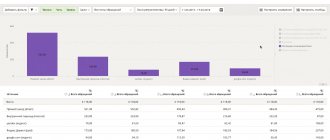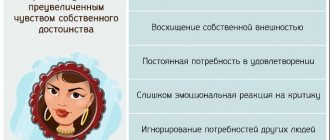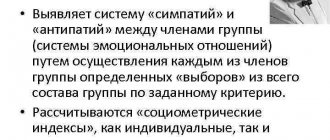Sociometry (interpreted as a theory and method at the same time) is one of the modern areas of social psychology, which has played an important role in the study of small groups, including school ones. It was formed and widely used in the first half of the twentieth century.
The term “sociometry” itself has a Latin etymology and comes from a combination of two words: “socius”, which translates as companion, and “metrum”, that is, “measure”. “Sociometry” (as a term) was already mentioned in 1916 in the text of a letter sent to the Ministry of Internal Affairs of the Austro-Hungarian Empire. But serious research and publications on this issue appeared only in 1931–1936.
Sociometric procedure
The general scheme of actions for sociometric research is as follows. After setting the research objectives and selecting measurement objects, the main hypotheses and provisions regarding possible criteria for surveying group members are formulated. There cannot be complete anonymity here, otherwise sociometry will be ineffective. The experimenter’s requirement to reveal their likes and dislikes often causes internal difficulties among the respondents and manifests itself in some people in their reluctance to participate in the survey. When sociometric questions or criteria are selected, they are recorded on a special card or offered orally in an interview style. Each member of the group is obliged to answer them, choosing certain members of the group depending on their greater or lesser inclination, their preference over others, likes or, conversely, antipathies, trust or distrust, etc.
Group members are asked to answer questions that make it possible to discover their likes and dislikes one to one, towards leaders, group members whom the group does not accept. The researcher reads out two questions: a) and b) and gives the test subjects the following instructions: “Write on the pieces of paper under number 1 the name of the group member whom you would choose first, under number 2 - who would you choose if there was no first, under the number 3 - who would you choose if there were no first and second.” Then the researcher reads out a question about personal relationships and also gives instructions.
In order to confirm the reliability of the answers, the study can be conducted in a group several times. For repeated research, other questions are taken.
Sample questions for studying business relationships
1. a) which of your comrades from the group would you ask, if necessary, to provide help in preparing for classes (first, second, third)?
b) which of your comrades from the group would you like to ask, if necessary, to provide you with help in preparing for classes?
2. a) with whom would you go on a long business trip?
b) Which member of your group would you not take on a business trip?
3. a) which of the group members will better perform the functions of a leader (headman, trade union leader, etc.)?
b) which of the group members will find it difficult to fulfill the responsibilities of a leader?
Examples of questions for studied personal relationships
1. a) Who in your group would you turn to for advice in a difficult life situation?
b) with whom from the group would you like to consult about anything?
2. a) if all the members of your group lived in a dormitory, which of them would you like to live in the same room with?
b) if your entire group were reorganized, which of its members would you not want to keep in your group?
3. a) who from the group would you invite to your birthday?
b) who from the group would you not like to see at your birthday?
In this case, the sociometric procedure can be carried out in two forms. The first option is a nonparametric procedure. In this case, the subject is asked to answer the questions of the sociometric card without limiting the number of choices of the subject. If there are, say, 12 people in a group, then in this case each of the respondents can choose 11 people (except himself). Thus, the theoretically possible number of choices made by each group member towards other group members in the above example will be equal to (N-1), where N is the number of group members. In the same way, the theoretically possible number of choices received by a subject in a group will be equal to (N-1). Let us immediately understand that the indicated value (N-1) of the resulting elections is the main quantitative constant of sociometric measurements. In a nonparametric procedure, this theoretical constant is the same for both the individual making the choice and for any individual who is the object of the choice. The advantage of this version of the procedure is that it allows us to identify the so-called emotional expansiveness of each group member and to make a snapshot of the diversity of interpersonal connections in the group structure. However, when the group size increases to 12-16 people, these connections become so numerous that it becomes very difficult to analyze them without the use of computer technology.
Another disadvantage of the nonparametric procedure is the high probability of obtaining a random selection. Some subjects, guided by personal motives, often write in Questionnaires: “I choose everyone.” It is clear that such an answer can have only two explanations: either the subject really has developed such a generalized amorphous and undifferentiated system of relationships with others (which is unlikely), or the subject deliberately gives a false answer, hiding behind formal loyalty to others and to the experimenter (which is most likely) .
Analysis of such cases has led some researchers to try to change the very procedure for applying the Method and thus reduce the likelihood of random selection. This is how the second option was born - a parametric Procedure with a limited number of elections. The subjects are asked to choose a strictly fixed number from all members of the group. For example, in a group of 25 people, everyone is asked to choose only 4 or 5 people. The magnitude of the limitation on the number of sociometric elections is called the “sociometric limitation” or “election limit.” Many researchers believe that the introduction of a “sociometric constraint” significantly exceeds the reliability of sociometric data and facilitates statistical processing of the material. From a psychological point of view, sociometric limitation forces subjects to be more attentive to their answers, to choose to answer only those group members who really correspond to the proposed roles of partner, leader or comrade in joint activities. The election limit significantly reduces the likelihood of random responses and makes it possible to standardize election conditions in groups of different sizes in one sample, which makes it possible to compare material across different groups.
Currently, it is generally accepted that for groups of 22-25 participants, the minimum value of the “sociometric constraint” should be chosen within 4-5 choices. A significant difference in the second version of the sociometric procedure is that the sociometric constant (N-1) is preserved only for the system of resulting elections (i.e., from group to participant). For a system of given choices (i.e., to a group from a participant), it is measured by a new value d (sociometric constraint). By introducing this value, it is possible to standardize the external conditions of elections in groups of different sizes. To do this, it is necessary to determine the value of d using the same probability of random selection for all groups. The formula for determining such a probability was proposed at one time by J. Moreno and E. Jennings: P(A)=d/(N-1), where P is the probability of a random event (A) of sociometric choice; N is the number of group members.
Typically, the value of P(A) is selected within the range of 0.20-0.30. Substituting these values into formula (1) to determine d with a known value N, we obtain the desired number of “sociometric restrictions” in the group selected for measurements.
The disadvantage of the parametric procedure is the inability to reveal the diversity of relationships in a group. It is possible to identify only the most subjectively significant connections. As a result of this approach, the sociometric structure of the group will reflect only the most typical, “selected” communications. The introduction of a “sociometric limitation” does not allow us to judge the emotional expansiveness of group members.
A sociometric card or sociometric questionnaire is compiled at the final stage of program development. In it, each group member must indicate his attitude towards other group members according to selected criteria (for example, in terms of teamwork, participation in solving a business problem, leisure time, playing, etc.) The criteria are determined depending on the program of this study : whether relationships are studied in an industrial group, a leisure group, a temporary group or a stable group.
Definition of sociometry
Sociometry is a qualitative method for measuring social relationships and is based on the study of the behavior of an individual within a group.
It was first developed by psychotherapist Jacob Levy Moreno (later adapted by Helen Jennings), whose research was aimed at establishing the relationship between social structures and psychological well-being and was intended for the needs of group psychotherapy.
Moreno conducted his first long-term sociometric study in 1932–1938 at a public girls' school in Hudson, New York.
Sociometry (as a system) includes three components that are the object of study:
- socius, which translated from Latin means “ally”, “friend”;
- measurement;
- drama, that is, action.
Sociometry (its “old school”, the founder of which is Jacob Moreno) reached its highest stage of development around the mid-1950s, and from 1956 the formation of “new sociometry” began, which mainly adheres to the “old” direction.
The teachings of Jacob Moreno were developed in the works of his followers, for example, such Western sociologists as L. D. Zeleny, H. R. Beckley, A. Bneirstedt, S. Engelmeyer, who examined the scientist’s research in relation to other problems that arise in society . In this regard, they began to distinguish political, family, military sociometry, and so on.
In Russia they started talking about sociometry only in the middle of the last century. However, the word “sociometry” at that time was replaced by other terms: “group therapy”, “small group”, “group status”. But by 2000, the first publications on this topic appeared by such Russian psychologists as Ya. L. Kolominsky, A. I. Rozov, I. P. Volokov, G. M. Andreeva.
Sociometry (methodology for schoolchildren, preschoolers, industrial groups) as a research method used by Russian scientists was limited mainly to sociometric questioning.
The main domestic schools were founded by Yakov Lvovich Kolominsky in Minsk and Igor Pavlovich Volkov in Leningrad. Also among the leading ones is the Estonian school of sociometry.
Currently, sociometry is considered by Russian scientists as a branch of psychology, researched by psychologists such as E. V. Andrienko, R. S. Nemov, B. A. Sosnovsky, N. Lutoshkin, V. S. Avenosov, E. I. Rogov and others.
Different psychologists, based on their vision of the issue, give sociometry different definitions. However, the main object of research always remains interpersonal relationships characteristic of the group under study.
- For example, Jacob Moreno defined sociometry as "the study of the evolution and organization of groups and the position of individuals within them." In his opinion, sociometric studies reveal hidden structures that give a group its shape: alliances, subgroups, reveal hidden beliefs, ideological agreements.
- Helen Jennings, one of the pioneers in the field of sociometric research, described sociometry as “a device for graphically and directly displaying the general configuration of relationships between members of a group at a particular point in time.”
- Alexander Franz (psychoanalyst, founder of the Chicago School of psychoanalysis) interpreted sociometry as “a method used to detect and manipulate social configuration by measuring the attractions and repulsions between individuals in a group.”
- Uri Bronfenbrenner (a major specialist in the field of child psychology) defined sociometry as “a method of identifying, describing and assessing the social status of individuals, the structure and development (of groups) by measuring the degree of acceptance or rejection of individuals in groups.”
Dictionaries most often provide a general definition: sociometry is the measurement of relationships that dominate among group members.
Sociometric card
| № | Type | Criteria | Elections |
| 1 | Job | a) Who would you like to choose as your foreman? b) Who would you like to choose as your foreman? | |
| 2 | Leisure | a) Who would you like to invite to the New Year's Eve party? b) Who would you like to invite to your New Year's Eve party? |
When conducting a survey without limiting the choices, the sociometric card should have a column after each criterion, the size of which would allow one to give fairly complete answers. In a survey with limited elections, to the right of each criterion, as many vertical graphs are drawn on the card as the number of elections we expect to allow in this group. Determining the number of elections for groups of different sizes, but with a predetermined value of P(A) in the range of 0.14-0.25, can be done using a special table (see below).
Limitation values of sociometric choices
| Number of group members | Sociometric constraint d | Probability of random selection P(A) |
| 5-7 | 1 | 0,20-0,14 |
| 8-11 | 2 | 0,25-0,18 |
| 12-16 | 3 | 0,23-0,19 |
| 17-21 | 4 | 0,22-0,19 |
| 22-26 | 5 | 0,22-0,19 |
| 27-31 | 6 | 0,22-0,19 |
| 31-36 | 7 | 0,21-0,19 |
Sociometry results. Data processing
When the sociometric cards are filled out and collected, the stage of their mathematical processing begins. The simplest methods of quantitative processing are tabular, graphical and indexological.
Sociomatrix (table) . First, you should build a simple sociomatrix. An example is given in the table (see below). The election results are distributed throughout the matrix using symbols. The results tables are filled out first, separately for business and personal relationships.
The surnames of all members of the group being studied are written down vertically behind the numbers; horizontally - only their number. At the corresponding intersections, the numbers +1, +2, +3 indicate those whom each subject chose in the first, second, third place, and the numbers -1, -2, -3 - those whom the subject does not choose in the first, second and third place. .
Mutual positive or negative choices are circled in the table (regardless of the order of choice). After the positive and negative elections are entered into the table, it is necessary to calculate vertically the algebraic sum of all elections received by each member of the group (sum of elections). Then you need to calculate the sum of points for each member of the group, taking into account that the choice in the first place is equal to +3 points (-3), in the second - +2 (-2), in the third - +1 (-1). After this, the total algebraic sum is calculated, which determines the status in the group.
| № | Surname | 1 | 2 | 3 | 4 | 5 | 6 | 7 | 8 | 9 | 10 |
| 1 | Ivanov | +1 | +2 | +3 | -1 | ||||||
| 2 | Petrov | +1 | +3 | +2 | |||||||
| 3 | Sidorov | -1 | +1 | +2 | +3 | ||||||
| 4 | Danilova | +2 | +1 | +3 | |||||||
| 5 | Alexandrova | +2 | +1 | +3 | -3 | -2 | |||||
| 6 | Adamenko | ||||||||||
| 7 | Petrenko | +1 | +3 | ||||||||
| 8 | Kozachenko | +1 | +3 | +2 | |||||||
| 9 | Yakovleva | +2 | +1 | +3 | -1 | ||||||
| 10 | Shumskaya | +2 | +1 | +3 | -1 | ||||||
| Number of elections | |||||||||||
| Number of points | |||||||||||
| total amount |
Note: + positive choice; - negative choice.
Analysis of the sociomatrix for each criterion gives a fairly clear picture of the relationships in the group. Summary sociomatrices can be constructed that give a picture of elections based on several criteria, as well as sociomatrices based on data from intergroup elections. The main advantage of the sociomatrix is the ability to represent elections in numerical form, which in turn makes it possible to rank group members according to the number of elections received and given, and to establish the order of influences in the group. Based on the sociomatrix, a sociogram is constructed - a map of sociometric choices (sociometric map.
Sociometric methods
The term "sociometric methods" refers to a large class of methods that assess the positive and negative connections between people within a group.
Bulgarian psychologist Lyuben Desev divided sociometry methods into three areas:
- dynamic - these are methods that study groups in action (he includes Jacob Moreno himself, Jennings and Infeld among the researchers in this area);
- diagnostic, aimed at studying and systematizing social groups (George Andrew Lundberg, Uri Bronfenorenner, Francis Chapin, J. H. Criswell, L. D. Zeleny, Emory Bogardus and others worked in this direction).
- mathematical (researchers Paul Lazarsfeld, Charles Dodd, D. Stewart).
Jacob Moreno's sociometric method is a method for collecting primary social information about the relationships of individuals in small social groups.
It includes:
- sociometry (that is, a survey to identify relationships in a group and recording the data obtained);
- sociodrama (playing out various social situations) and psychodrama (playing out situations that arise during interpersonal communication);
- group therapy, or morenotherapy (an action that involves activating among group members a sense of responsibility for themselves and for the group as a whole).
The basic principle of the Moren method is that each group member can evaluate another group member on one or more criteria in a cyclic order.
Sociogram
Sociogram is a graphic representation of the reaction of subjects to each other when answering a sociometric criterion. A sociogram allows you to make a comparative analysis of the structure of relationships in a group in space on a certain plane (“shield”) using special signs (Fig. below). It gives a clear idea of the intra-group differentiation of group members based on their status (popularity). An example of a sociogram (map of group differentiation) proposed by Y. Kolominsky, see below:
——> positive one-sided choice, <——> positive mutual choice, ——> negative one-sided choice, <——> negative mutual choice.
The sociogram technique is a significant addition to the tabular approach in the analysis of sociometric material, because it allows for a deeper qualitative description and visual representation of group phenomena.
Sociogram analysis consists of finding the central, most influential members, then mutual pairs and groupings. Groups are made up of interconnected individuals who seek to choose each other. Most often in sociometric measurements there are positive groups of 2, 3 members, less often of 4 or more members.
Functions and role
Sociometry has two main branches: research and applied:
- Research sociometry deals with the study of socio-emotional relationships in groups using certain criteria, for example, determining the leader within a team.
- Applied sociometry research aims to help groups and individuals expand and develop their pre-existing psychosocial relationships.
Now sociometry is one of the most popular methods of analyzing social networks. Its purpose is to map all relationships and divide them into positive and negative choices (or relationships of positive, negative, or null direction).
For this purpose, special software is being developed aimed at analyzing groups and their structures. For example, the international social network Facebook relies heavily on the sociometry of its users.
Sociometric methods based on the assessment of social choice and interpersonal attractiveness are also used:
- in social psychology;
- sociology;
- psychiatry;
- social anthropology.
“The main methodological task of sociometry (as defined by Moreno) is the revision of the experimental method so that it can be effectively applied to social phenomena.” Based on the fact that sociometry determines likes and dislikes in a group, its methods are applicable to the study of ethnic relations and ways of identifying individuals with ethnic groups.
For example, using sociometric research, Joan Criswell studied white-black relations in American classrooms, Gabriel Weimann examined ethnic relations in Israel, and James Page studied intra- and inter-ethnic identification within the Pacific.
Despite the phenomenal progress achieved over the past few decades in the analysis of sociometric data obtained from studies of various groups (school, preschool, student, professional), characteristic shortcomings still remain.
The most serious of them is the “tendency to use random variations” and the interpretation of such as socially significant.
Author: Irina Zhuravka









